- Home
- Scott Turow
The Last Trial Page 13
The Last Trial Read online
Page 13
“No, they hired an outside concern, Global International, which is a clinical research organization, a company that specializes in conducting clinical trials.”
“Is it typical for a pharmaceutical manufacturer to hire a clinical research organization, called a CRO for short?”
“At the FDA we do not deal directly with CROs, but most clinical trials we review these days have been conducted by those kinds of organizations. May I explain?”
“Please,” answers Moses, as if they have not rehearsed Dr. Robb’s testimony several times.
“A clinical trial must be conducted in strict compliance with that testing plan, the protocol, which the FDA has approved. The medication is then administered by expert physicians, called investigators, and for the sake of objectivity at dozens of different sites, very often located all over the world. Very few pharma manufacturers have the resources to do all that themselves.”
“And how are the patients monitored?”
“Typically, the investigators and their staffs examine the patients regularly and also perform various tests and imaging.”
“And what happens with that information?”
“The investigative staff regularly keys coded reports for each patient into a database maintained by the CRO.”
“And is that database of results public?”
“Not during the test. As I’ve said, in order to maintain the double blind, the results of a clinical trial are ordinarily kept secret until the end, except for safety monitoring that is done in such a way as to isolate it from the trial sponsor and all participants.”
“What does ‘unblinding data’ mean?”
“That means looking at all the data, including the part that is most sensitive, the codes that show which medication the trial participants are receiving.”
“Should unblinding be reported to the FDA?”
“As I said, there is some confidential safety monitoring. Other than that, under our regulations, any unblinding that occurs outside the test protocol must be reported to us.”
“And were you informed in September 2016 or any time thereafter that Dr. Kiril Pafko had unblinded the g-Livia dataset?”
“Objection,” says Marta. “That assumes a fact not in evidence.”
Sonny says, “Restate the question, Mr. Appleton.”
“Was the FDA ever informed that the g-Livia dataset had been unblinded before the conclusion of the clinical trial?”
“No. Never. I searched my records and the agency records and we received no reports of any unblindings during the trial, even by the safety monitors, who apparently found no reason to do so.”
“Now, what is an ‘adverse event’?”
“That’s an event during the course of a clinical trial that adversely affects the health of a patient who is a study subject. Adverse events are always supposed to be documented in the trial database.”
“And what is a ‘serious adverse event’?”
“A serious adverse event is one that potentially compromises the life of a trial participant.”
“Is dying a serious adverse event?” asks the US Attorney. Moses’s courtroom demeanor is so stolid than he can ask a question like that without seeming like a wise-guy. Dr. Robb, however, can’t contain a faint smile.
“Definitely.”
“Are serious adverse events in a clinical trial supposed to be reported to the FDA by regulation?”
“Absolutely.”
Moses pauses then to show Dr. Robb an exhibit labeled ‘Pafko Computer-A,’ which he asks to display to the jury. The Sterns could object, because the exhibit can’t be formally admitted until the FBI forensic experts have explained how they obtained the screenshot of the Global International database from Kiril’s office computer. Yet there is little to be gained by that tactic, since Dr. Robb, as an expert, can testify about the exhibit anyway. In the courtroom, sometimes the best the defense can do is feign nonchalance.
“Now, calling your attention, Dr. Robb, to Pafko Computer-A. What does that appear to be?”
“It appears to be a tabular summary, a table of results, from the g-Livia clinical trial database. The data has been unblinded and sorted for all serious adverse events in the prior six months, that would be from March 15, 2016, through September 15, 2016, the day the database was created.”
“And by ‘unblinded,’ you mean the data is sorted to show which patients are receiving g-Livia?”
“Yes.”
“And among the g-Livia patients are there any fatalities listed?”
“Yes. You can see those in the far-right corner on the page. There are fourteen of them, and twelve are coded to show the cause of death as ‘not disease related.’ Of those twelve, ten occurred in the prior quarter.”
“And what else can you tell us by looking at Pafko Computer-A about those deaths?”
“The investigators have keyed in data about each of those twelve episodes that are strikingly similar: high fevers, rigors, elevated blood pressure. Each is described as sudden onset, with death occurring within thirty-six hours of hospitalization, usually far sooner than that.”
“And what conclusions do you draw as an expert looking at that database?”
“To me it is very clear that twelve patients who had been treated with g-Livia for more than a year had died in the last six months for reasons that had no visible relationship to their underlying cancer. The frequency of those mortalities seems to be rising recently.”
“Are those serious adverse events that should have been reported to the FDA?”
“Without question.”
“And if you had seen Pafko Computer-A, or received a report containing similar information, what would you have done?”
“I would have suspended the approval process for g-Livia immediately in order to investigate further.”
“Next I want to show you an exhibit called Global-A. What does that appear to be?”
“That is a similar tabular summary reflecting the database for the g-Livia patients in the trial for the prior six months, but this one is dated September 16, 2016.”
“Is it similar to Pafko Computer-A?”
“It is very very similar to Pafko Computer-A, but not the same.”
“And how does it differ?”
“The twelve sudden deaths are entirely omitted in Global-A.”
“And if you had been presented with this data, as opposed to Pafko Computer-A, the screenshot from a day before, what would your response have been?”
“I wouldn’t have had a response. All appears well.”
Moses then shows her PT’s formal request to market g-Livia, something called a Biologics License Application, which was filed in October 2016. The document is marked as Government Exhibit-1.
“And how does the data in Global-A compare to the data that was presented in support of PT’s marketing application, Government Exhibit-1?”
“It is the same. There is more data, a great deal more, attached to Government Exhibit-1, which incorporated something called a clinical study report. But all the data in Global-A is part of GX-1.”
“And with regard to Government Exhibit-1, PT’s markeing application, did you attend a meeting at the FDA with representatives of Pafko Therapeutics on October 27, 2016?”
“I did.”
“And who was present from PT?”
There was Kiril and Lep and Tanakawa, she says, as well as the same mob from the FDA.
“And was the data contained in the clinical study report that is part of Government Exhibit-1 discussed?”
“Yes. The numbers seemed to show that g-Livia was a great advance over existing therapies.”
“And did you have any conversation with the defendant, Kiril Pafko?”
“I did. As the meeting was ending, I shook his hand and said, ‘Congratulations, you seem to have done it again.’”
“And what did you mean by that?”
“I meant that g-Livia appeared to be an advance in cancer treatment as great as the
discovery of RAS, for which Dr. Pafko had received the Nobel.”
“Now, when you talk about approval of a medication, who makes that decision at the FDA?”
“If we are talking about cancer treatments, the marketing applications, like Government Exhibit-1, ends up on my desk with the recommendation of my colleagues and a panel of outside experts called a drug advisory committee. Ordinarily, I make a recommendation to the commissioner and my other superiors, based on the opinions within the agency and my own review of the evidence.”
“And how many cancer treatments have been approved by the FDA without your recommendation in the last six years?”
“None.”
“And had you been aware, Dr. Robb, of the data shown in Pafko Computer-A, would you have supported accelerated approval for g-Livia in January 2017?”
“Absolutely not.”
Moses goes back to check with Feld that he’s made all his points. Feld in fact has something else and Moses nods and returns to his customary place at the podium.
“Have you examined the PI, the product insert for g-Livia?”
“I have.”
“There is a warning there about possible adverse effects of mAbs—monoclonal antibodies. Is that warning adequate in your view?”
“Completely inadequate. It is little more than boilerplate. When there is an identifiable risk of a lethal complication or side effect from a medication, we require a black box warning.”
“And what is that?”
“Exactly what it sounds like, a box in the PI with a thick black border around language describing the possible problem. The point of the black box,” says Dr. Robb, “is so that the doctor and the patient can’t miss it.”
As an illustrative exhibit, Moses introduces a page from the PI for another product with a black box warning and then displays it on the monitor. It absorbs most of the page and is as dramatic-looking as it sounds.
With that, Moses turns to Marta and says, “Your witness.” Humble as he is, Moses still shows just the faintest cat-and-canary smile. Dr. Robb has cleaned Kiril’s clock.
Marta comes to her feet. In her father’s opinion, Marta is an excellent trial lawyer, poised in court and never without her wits. She is more adept than Stern, both with legal argument and the technical mastery needed to confront an expert witness. She is also especially good cross-examining certain men—including many older police officers—who tend to be riled by strong women. But over the years, both Sterns have accepted, with little actually said, that Marta does not have the same courtroom flair as her father. On cross, Stern prepares feverishly, scribbling notes, selecting exhibits, plotting an anticipated order to his questions, but then flies by instinct once he is on his feet. Marta prefers to stick to a script. By tacit agreement, the spotlight moments usually go to Stern, but they both see Robb as a better witness for Marta for a couple of reasons. Marta by now is far better versed in the complex FDA regulations. What’s more, a woman confronting another woman may play better with the jury, since Dr. Robb is in for a hard time, as is evident as soon as Marta has introduced herself.
“Dr. Robb, I want to read you a quote from the New England Journal of Medicine from an article published sixteen years ago. ‘If Massachusetts announced tomorrow that it was going to license persons to operate something as potentially dangerous as a motor vehicle on the basis of a test drivers had given themselves, the response would almost certainly be national outrage. And yet, with billions of dollars at stake, and, more important, hundreds of millions of lives, we allow America’s pharmaceutical industry to test the safety and efficacy of their products for the public marketplace on their own, with limited government oversight. We can hardly profess surprise when that process produces unreliable, even fatal results.’”
Moses has risen, shaking his head.
“Objection, Your Honor, the pharmaceutical testing process is not on trial.”
Marta intervenes. “Before you rule, Your Honor, may I finish the question?”
Sonny lifts a hand half-heartedly.
“Do you know who wrote those words, Dr. Robb?”
Robb has been smiling ruefully since Marta started reading.
“I do. It was Dr. Jason Cardenal.”
“And who is Dr. Cardenal?”
“He is currently the commissioner of the Food and Drug Administration.”
“The head of the agency?”
“Yes.”
“Same objection,” says Moses. “That is irrelevant.”
Sonny looks at Marta with one eye closed, and Marta responds.
“First, Your Honor, Mr. Appleton asked why the FDA doesn’t perform pharmaceutical testing. Dr. Robb said it is too expensive, as if that is all there is to the subject. Second, Dr. Robb is the government’s main witness to establish that the FDA was supposedly defrauded. It is relevant if the head of the agency has publicly warned that the nature of the system renders the information the FDA receives inherently suspect.”
Sonny smiles fleetingly.
“I don’t know about your second reason, Ms. Stern, but I accept the first. The objection is overruled.”
Dr. Robb interjects, “Dr. Cardenal has said often in public that he’s changed his views.”
“Move to strike,” says Marta.
“Granted.” Sonny turns to Robb. “Dr. Robb, please don’t volunteer remarks. Wait for the lawyers to ask you questions.”
Robb nods, somewhat chastened. Cardenal’s article proposed a system of government testing of new drugs and biologics, paid for by a small charge on every pharmaceutical product sold in the US. The pharma industry objected vehemently, as did many in Congress who thought this would create a monstrous new federal bureaucracy. Others feared that the proposed system would be even more vulnerable to the influence of lobbyists. Cardenal’s idea, despite widespread support from the medical community, went nowhere.
Marta, in the meantime, starts down the main road of her cross, as she’s previewed it for her father.
“Is it a fair summary of your direct testimony, Dr. Robb, that as you sit here today, you would not recommend approval of g-Livia, if you had seen the database for the g-Livia clinical trial, Government Exhibit Pafko Computer-A, as it existed on September 15, 2016?”
“Correct.”
The point of emphasis for Marta is that Robb today holds the same opinion about g-Livia. His daughter has explained to Stern that Robb can’t say anything else, since it is essential to the FDA’s efforts to void its approval of g-Livia.
“And the standard for whether the FDA approves a medication, meaning okays it to be sold in the US—the standard is whether the medication has been shown to be safe and effective, true?”
“True.”
“So in deciding whether or not to approve a medication, you are not making a moral judgment, correct?”
“I don’t understand.”
“Hypothetically, if you concluded a medication is safe and effective under FDA standards, you would recommend approval, even if there were serious errors or omissions or even outright lies in the application, right?”
“I’m not sure how the hypothetical is possible—how I could feel sure that a medication is safe and effective if the drug sponsor had lied to us. I need to think about that. But yes, we’re not making moral judgments.”
“But fraud is beside the point in terms of the opinion you expressed about approval?”
“I don’t think it’s beside the point for everyone in the agency. As you know, the FDA declared—”
“Excuse me,” Marta quickly interjects, with a hand raised. Dr. Robb was about to refer to the administrative action the FDA has commenced to declare its approval of g-Livia void because it was based on fraud. That is one more piece of civil litigation Sonny has ruled that the jury is not supposed to hear about.
Marta says, “I’m only asking questions of you, Dr. Robb, not anyone else in your agency. You’re the person here to testify.”
“I understand.”
�
��And you’re saying, as you sit here today, that the only reason you wouldn’t support approval of g-Livia is because those twelve deaths shown on Pafko Computer-A raise questions in your mind about whether the medication is safe and effective?”
Robb pouts a lip and takes an instant to ponder.
“That’s what I’m saying.”
“And for purposes of making that judgment, it also doesn’t matter whether those deaths should have been reported as serious adverse events, does it?”
“Well, I’m not sure I can say it doesn’t matter.”
“Can you name an instance, Dr. Robb, when the FDA refused to approve a medication solely because there had been regulatory violation?”
Robb hesitates, then says, “I need to think about that.”
Marta returns to the defense table and picks up a paperback volume of the same dimensions as the Kindle County phone book.
“Is this a copy of the Code of Federal Regulations containing most of the rules your agency has formally established for clinical trials?” It is actually a large-print version that looks considerably more imposing than the standard publication, but Robb, apparently in mind of Sonny’s directive about not volunteering, simply says yes.
“And how often does it happen, Dr. Robb, that a sponsoring organization like a pharmaceutical manufacturer fails to comply with each and every one of these regulations during a clinical trial?”
“I would guess it happens every day. But not all these regulations are of equal importance.”
Marta moves to strike the second sentence and Sonny allows the motion. The judge turns to Dr. Robb.
“Dr. Robb,” she says, “again, please don’t volunteer. Listen to the question and answer the question. Don’t force me to make you go stand in the corner.”
Robb actually laughs and so does much of the courtroom.
Sonny continues. “Mr. Appleton over there is a very fine lawyer, and if he thinks there are other facts the jury should know, he’ll ask you about them after Ms. Stern is through.”
“Gotcha,” says Robb.
Marta is a few feet in front of Robb, still holding the copy of the regs.
“In fact, Dr. Robb, going back to the question I asked just a moment ago, most medications would not be approved by your agency, if regulatory violations by themselves prevented that.”

 Testimony
Testimony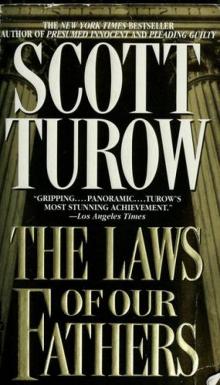 The Laws of Our Fathers
The Laws of Our Fathers Ordinary Heroes
Ordinary Heroes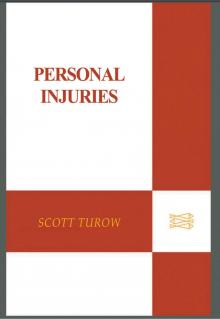 Personal Injuries
Personal Injuries Limitations
Limitations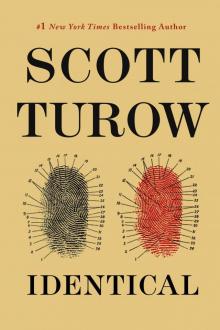 Identical
Identical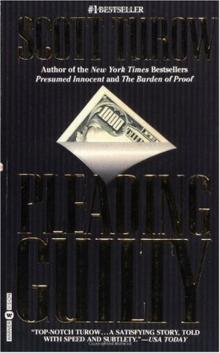 Pleading Guilty
Pleading Guilty Presumed Innocent
Presumed Innocent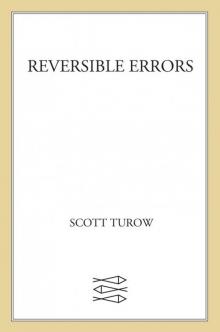 Reversible Errors
Reversible Errors One L: The Turbulent True Story of a First Year at Harvard Law School
One L: The Turbulent True Story of a First Year at Harvard Law School Ultimate Punishment
Ultimate Punishment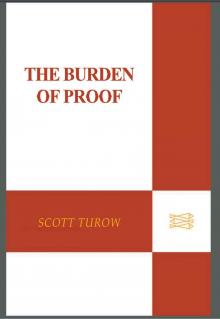 The Burden of Proof
The Burden of Proof Ordinary Heroes (2005)
Ordinary Heroes (2005)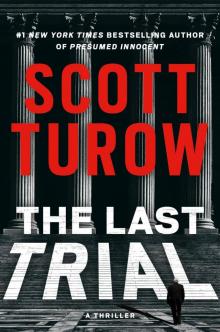 The Last Trial
The Last Trial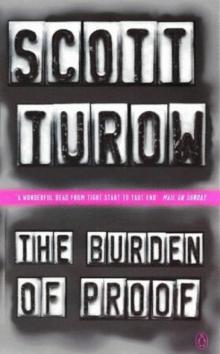 The Burden of Proof kc-2
The Burden of Proof kc-2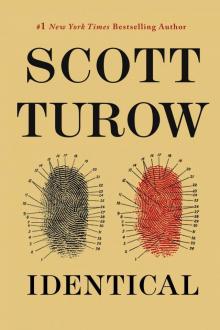 KC09 - Identical
KC09 - Identical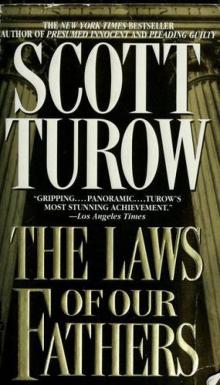 The Laws of our Fathers kc-4
The Laws of our Fathers kc-4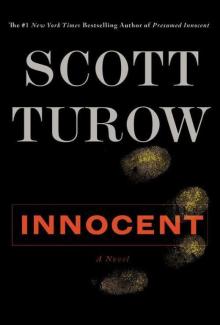 Innocent kc-8
Innocent kc-8 One L
One L Identical kc-9
Identical kc-9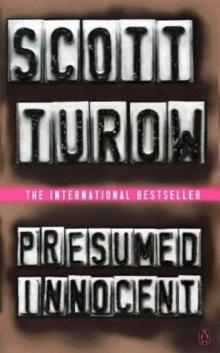 Presumed innocent kc-1
Presumed innocent kc-1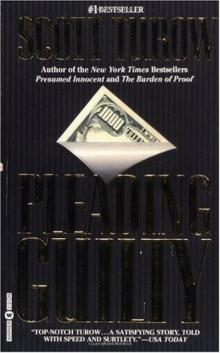 Pleading Guilty kc-3
Pleading Guilty kc-3 One L (1977)
One L (1977)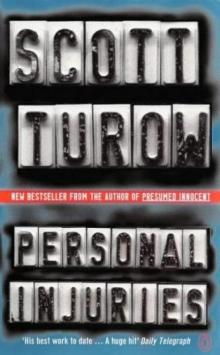 Personal injuries kc-5
Personal injuries kc-5